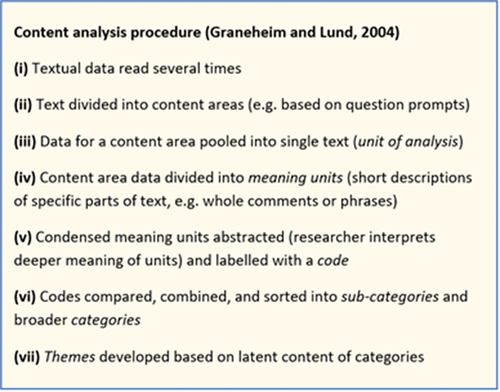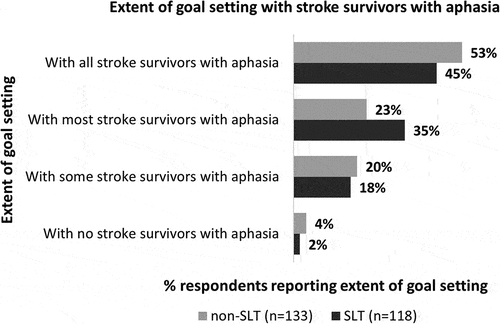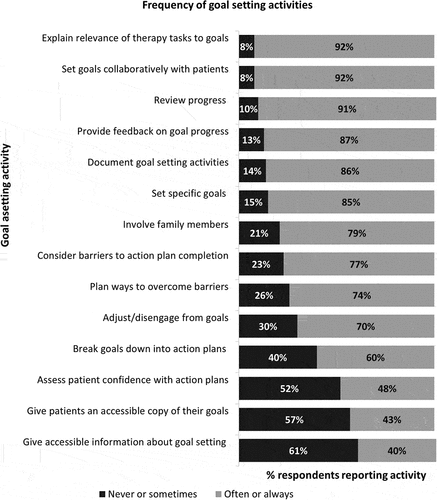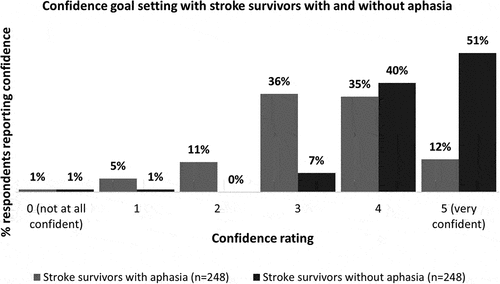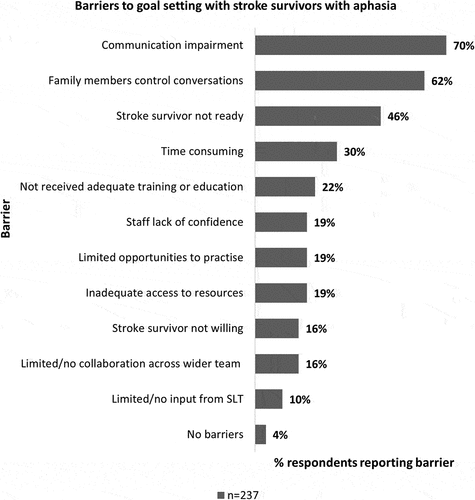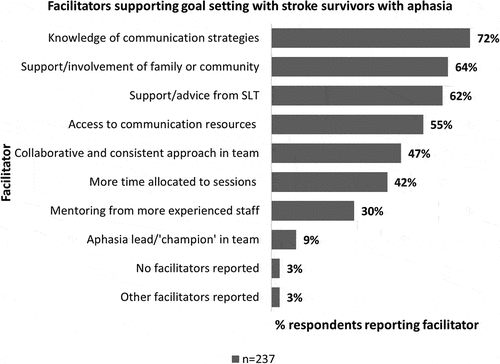Figures & data
Table 1. Respondent demographics; total responses: n = 251.
Table 2. Goal-setting methods* used with stroke survivors with aphasia.
Table 3. Reported topics in training received on generic goal setting, aphasia-specific goal setting, and communication skills.
Table 4. Theme 1 summary: It depends on the stroke survivor.
Table 5. Theme 2 summary: Involving stroke survivors, family, and others is challenging but important.
Table 6. Theme 3 summary: Working environment makes a difference.


